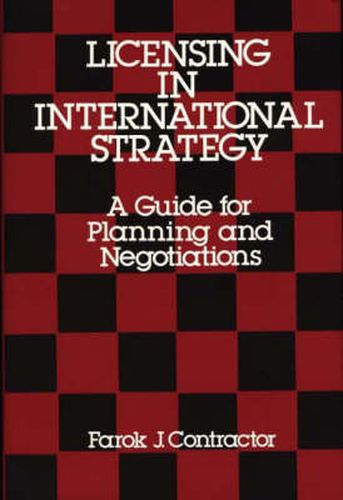Readings Newsletter
Become a Readings Member to make your shopping experience even easier.
Sign in or sign up for free!
You’re not far away from qualifying for FREE standard shipping within Australia
You’ve qualified for FREE standard shipping within Australia
The cart is loading…






This book examines the role of technology transfer and licensing in the corporate strategy of international companies. It explains the role of licensing programs, alternative ways of organizing a licensing department, how companies may choose between direct equity investment and pure licensing (or combinations), how to plan for an upcoming negotiation with a licensee or joint venture partner, how to deal with governments, and the function of patents and trademarks. Based on an analysis of data from two samples of 44 companies and 241 companies respectively, numerous interviews, and case studies, Contractor makes several strategy recommendations. Also presented are aggregate data for licensing income for the U.S., broken down by country and industry. In conclusion, the author examines the objectives and limits of government regulation of international technology transfers, and makes some recommendations for national politics.
$9.00 standard shipping within Australia
FREE standard shipping within Australia for orders over $100.00
Express & International shipping calculated at checkout
This book examines the role of technology transfer and licensing in the corporate strategy of international companies. It explains the role of licensing programs, alternative ways of organizing a licensing department, how companies may choose between direct equity investment and pure licensing (or combinations), how to plan for an upcoming negotiation with a licensee or joint venture partner, how to deal with governments, and the function of patents and trademarks. Based on an analysis of data from two samples of 44 companies and 241 companies respectively, numerous interviews, and case studies, Contractor makes several strategy recommendations. Also presented are aggregate data for licensing income for the U.S., broken down by country and industry. In conclusion, the author examines the objectives and limits of government regulation of international technology transfers, and makes some recommendations for national politics.